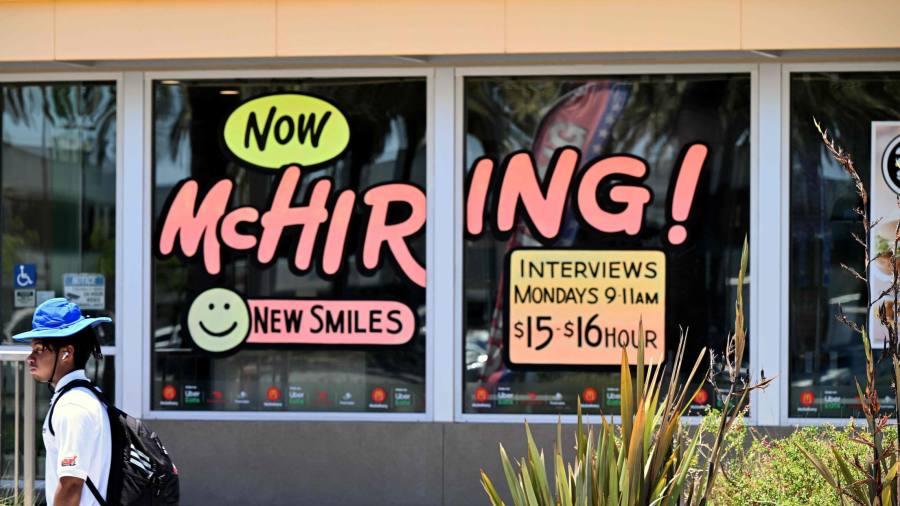
Receive free US employment updates
We’ll send you a myFT Daily Digest email rounding up the latest US employment news every morning.
Jobs growth in the US is expected to have slowed in June — but not quickly enough to discourage the Federal Reserve from resuming interest rate rises later this month.
Economists surveyed by Bloomberg predicted the US economy added 225,000 new non-farm jobs last month, down from the previous month’s bumper figure of 339,000 but still comfortably above its pre-pandemic average.
The unemployment rate is also forecast to remain near a multi-decade low, falling back to 3.6 per cent after a slight rise in May.
Official data will be released by the Bureau of Labor Statistics at 8.30am Eastern Time on Friday.
Employment and wage growth are significant drivers of inflation, particularly in the services sector. Friday’s numbers will be scrutinised by investors, economists and central bank officials, who are watching for evidence that the Fed’s interest rate rises are beginning to effect the economy.
Although headline inflation numbers have started to trend downward, the labour market has proven resilient, with economists underestimating the strength of payrolls growth for 14 consecutive months.
Hourly wage growth is expected to dip to 4.2 per cent on an annual basis. That would be its lowest level in two years but still well above the roughly 3.5 per cent rate that most economists think is consistent with meeting the Fed’s 2 per cent inflation target.
The central bank kept interest rates steady at its last policy meeting in June to give officials more time to take stock of the impact of its previous rate rises and the potential effects of recent turmoil in the banking sector.
However, policymakers have made clear that they are not yet done with their monetary tightening campaign, with most officials predicting two more quarter-point rate rises by the end of the year.
Futures markets are pricing in an almost 90 per cent chance of a rate increase at the Fed’s next meeting in late July, and economists at Citi predicted that even a below-consensus headline figure of about 170,000 “is still easily strong enough for the Fed to raise rates in July”.
Separate private sector jobs data published on Thursday reinforced those expectations, driving the yield on two-year Treasury notes to its highest level since 2007.
Still, Drew Matus, chief market strategist at MetLife Investment Management, said that “if [officials] were so certain they needed to move again, they would have done it at the last meeting. There has been some element of doubt in their minds about what they’re seeing.”
Matus added: “Any pick-up in the unemployment rate following last month’s number might cause some to think about how aggressive they want to be when they’re just beginning to see the impact of previous rises.”
Additional reporting by Colby Smith in Washington